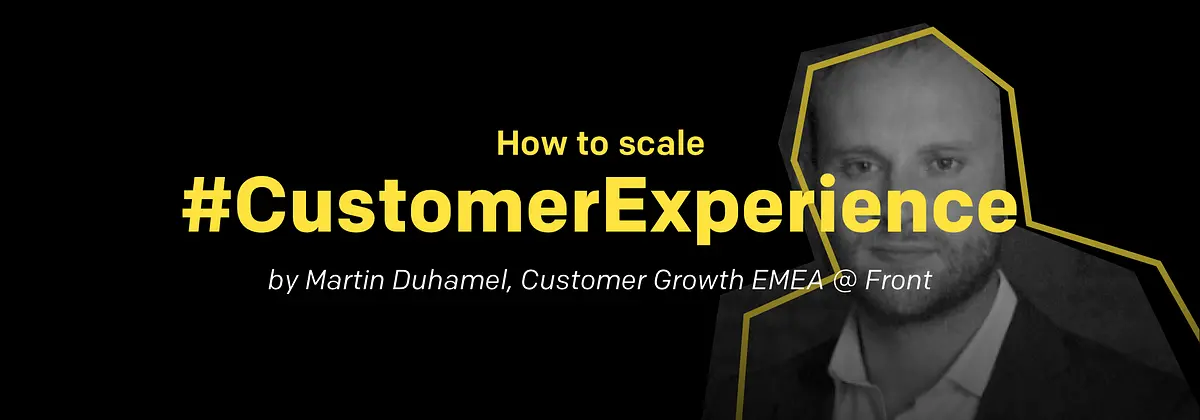This article includes key takeaways from Alexandra Brun’s talk on how to scale talent. You can view the full video on Youtube or check out the latest from our Scale series.
Alexandra is Talent & Culture Manager at Stuart where she oversees the scaling of their operations from a team of 70 to over a hundred and opening new cities and countries. Prior to her experience at Stuart, Alexandra was a head hunter at Urban Linker, a digital recruitment agency where she specialized in hiring tech profiles. Alexandra shares the key steps to bringing — and retaining — the team that will help scale your business.
5 key best practices
Best practice #1: Be a hunter
If you are going to build an A-team, the first tip is to hunt talents proactively. Only then can you find the talents that match the expertise and mindset that any ambitious project requires. To target them, get personal: forget email templates and adapt to each candidate. And be persistent — keep trying as any sales rep would if at first he/she doesn’t get a response.
Note: Alexandra recommends LinkedIn Recruiter Lite for small companies and LinkedIn Corporate for larger organizations (more than 50 employees).
Best practice #2: Scope the need
When several people internally are requiring a position to be staffed, they may have a large list of criteria. Try to narrow it down to essentials (no more than 4). Those key elements alone should determine whether a candidate will excel in the role.
Note: The exercise of actively limiting the list of criteria on a job posting is in itself a good indication of which values matter most to your company culture.
Best practice #3: Get personal
Focus your interviews on the key criteria mentioned in best practice #2. Then ask behavioral and hypothetical questions. Behavioral questions include going at length about how the candidate managed a certain type of challenge in the past, and what his reading of the situation was at the time. Hypotheticals sound abstract, but aren’t: let those questions guide the candidate to confront the problems he/she will have to tackle if they get the job.
Note: don’t downplay challenges, excellent candidates thrive on being confronted to new and tricky situations each day. So don’t divulge the complexeties of the role, you risk turning some good prospects away!
Best practice #4: Nail the candidate experience
It really should go without saying. But just in case, here’s a reminder. Answer candidate emails in a timely way (no more than a day) and, when you first meet, walk them through the process: who will they meet, by what time should they expect a final answer, will there be a test and — if so — try to keep it short!
Note: the candidate experience doesn’t stop at the offer, make them feel part of the team (send them swag, include them in internal communications, even add them to your slack) before they officially start.
Best practice #5: Room to grow
It starts in the interview, and continues throughout the entirety of the employee’s lifetime in the company: opportunities for progression are a great way to draw in ambitious candidates. And holding true to the possibilities for progression you share with team members is a powerful way to build employee loyalty.
3 key mindsets
Mindset #1: Pay what you would if they quit
There is a massive inconsistency in certain companies. The way it materializes is when employees leave, and they are offered a raise. That’s a sign that they matter to your business, that you’re aware of it, but that you were perhaps not inclined to let it show in their paycheck. Rather than stick too closely to dedicated budgets based on position, seniority, and the like — adapt to the people, and the impact they bring to the business.
Mindset #2: Turn employees into brand embassadors
To motivate employees, you need an inspiring mission. But you can also help them become brand ambassadors by presenting themselves as experts in their field, producing more content on their area of expertise, giving talks, and other actions that will positively impact them and — by extension — your employer brand.
Mindset #3: Give extra attention to management
Management is perhaps the most obvious indicator of company culture. So be demanding of your managers, and dedicate special attention when hiring them as their impact will go far beyond their immediate list of tasks. In addition, if you’re considering promoting a high performing team member to a management position you might also want to bring him coaching sessions to transition well into his new responsibilities.
Subscribe to get notified of the latest Scale talks.
About Alexandra Brun:
Alexandra is Talent & Culture Manager at Stuart where she oversees the scaling of their operations from a team of 70 to over a hundred and opening new cities and countries. Prior to her experience at Stuart, Alexandra was a head hunter at Urban Linker, a digital recruitment agency where she specialized in hiring tech profiles. Follow Alexandra on Twitter.


%20(2).png)
